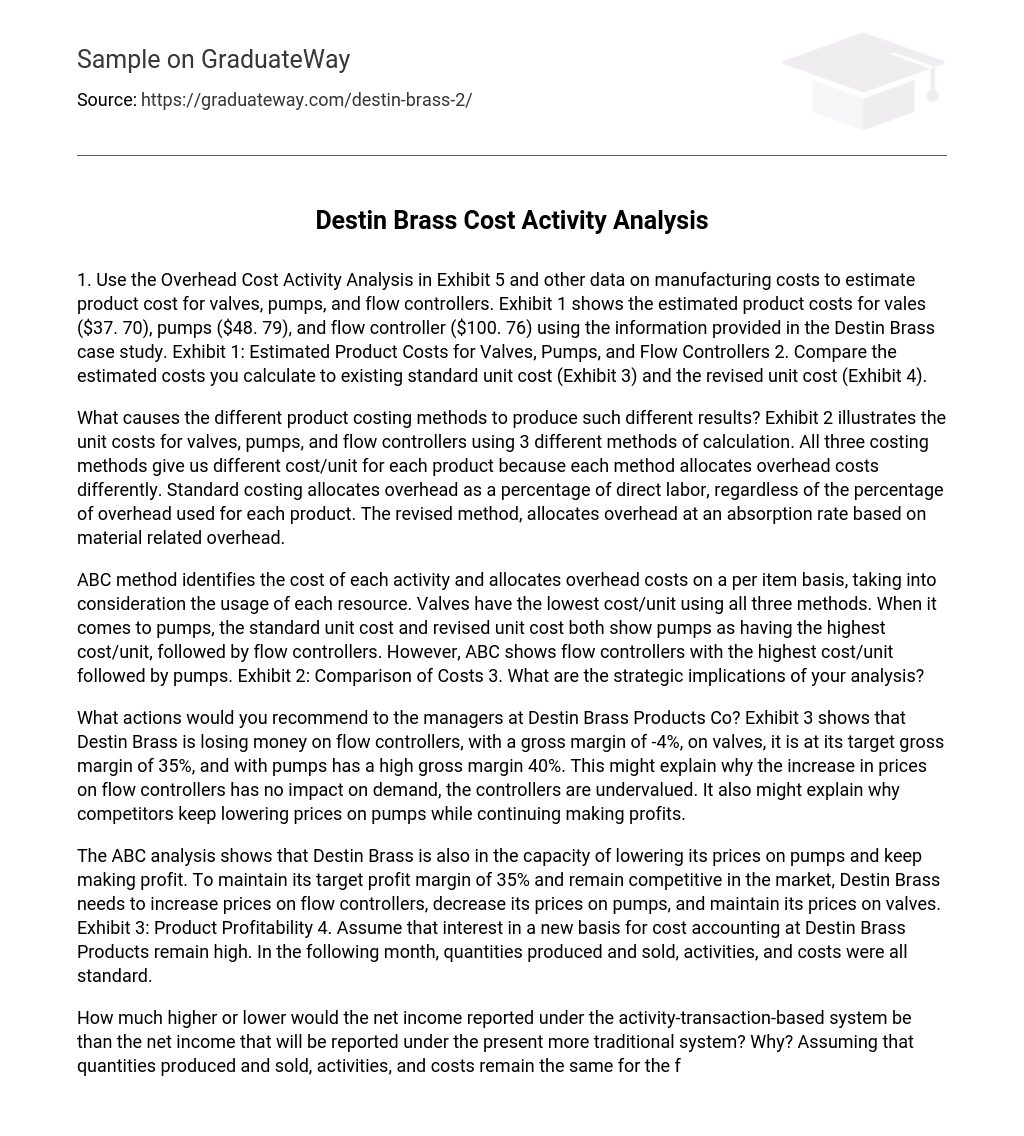1. To estimate the product cost for valves, pumps, and flow controllers, use the Overhead Cost Activity Analysis in Exhibit 5 along with other manufacturing cost data. According to the Destin Brass case study, Exhibit 1 shows that the estimated product costs for valves are $37.70, pumps are $48.79, and flow controllers are $100.76.
Exhibit 1: Estimated Product Costs for Valves, Pumps, and Flow Controllers
2. Compare your estimated costs to both the existing standard unit cost (Exhibit 3) and revised unit cost (Exhibit 4).
What causes the different product costing methods to produce such different results? Exhibit 2 illustrates the unit costs for valves, pumps, and flow controllers using three different methods of calculation. All three costing methods give us a different cost per unit for each product because each method allocates overhead costs differently. Standard costing allocates overhead as a percentage of direct labor, regardless of the percentage of overhead used for each product. The revised method allocates overhead at an absorption rate based on material-related overhead.
The ABC method identifies the cost of each activity and allocates overhead costs on a per-item basis, taking into consideration the usage of each resource. Valves have the lowest cost per unit using all three methods. However, when it comes to pumps, both the standard unit cost and revised unit cost show pumps as having the highest cost per unit, followed by flow controllers. In contrast, ABC shows flow controllers with the highest cost per unit followed by pumps. Exhibit 2: Comparison of Costs.
What are the strategic implications of your analysis?
What actions would you recommend to the managers at Destin Brass Products Co? Exhibit 3 shows that Destin Brass is losing money on flow controllers, with a gross margin of -4%. On valves, it is at its target gross margin of 35%, and with pumps, it has a high gross margin of 40%. This might explain why the increase in prices on flow controllers has no impact on demand. The controllers are undervalued. It also might explain why competitors keep lowering prices on pumps while continuing to make profits.
The ABC analysis reveals that Destin Brass can lower its pump prices and still make a profit. To maintain a target profit margin of 35% and stay competitive, the company should increase flow controller prices, decrease pump prices, and keep valve prices steady. Exhibit 3 displays product profitability.
Assuming interest in a new basis for cost accounting remains high at Destin Brass Products, the following month saw standard quantities produced and sold, activities, and costs.
How much higher or lower would the net income be reported under the activity-transaction-based system compared to the present more traditional system? Why?
Assuming that quantities produced and sold, activities, and costs remain constant for the next month, overall net income should be identical under both systems. However, net income per item would differ. The different methods do not alter the company’s total earnings (or profit); they only modify the unit costs of products such as valves, pumps, and flow controllers.





